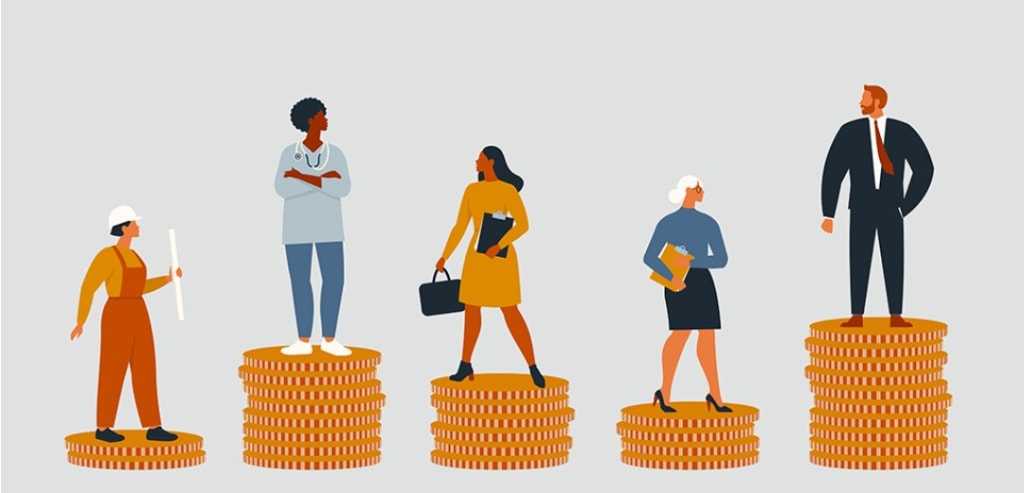The Gender Pay Gap
Examining Inequality in the Workplace

The gender pay gap remains a persistent issue in workplaces worldwide, highlighting inequalities in compensation between men and women. Despite progress in women's rights and advancements in gender equality, this disparity continues to persist across industries and professions. In this article, we delve into the complex dynamics of the gender pay gap, exploring its causes, implications, and the ongoing efforts to address this systemic issue. Join us as we uncover the challenges and opportunities for achieving fair and equitable compensation in the workplace.
Understanding the Gender Pay Gap: Breaking Down the Numbers
The gender pay gap refers to the difference in earnings between men and women. Numerous studies and statistics consistently reveal that, on average, women earn less than men for comparable work. This disparity is not simply a result of personal choices or qualifications but is rooted in deep-seated societal and structural factors that perpetuate gender inequality.
Causes of the Gender Pay Gap: Unraveling the Complexities
The gender pay gap stems from a combination of factors, including occupational segregation, gender stereotypes, and unequal opportunities for career advancement. Women are often concentrated in lower-paying industries and face barriers to entering higher-paying fields traditionally dominated by men. Additionally, gender biases and discriminatory practices can limit women's access to promotions and leadership positions, further exacerbating the pay gap.
Impacts of the Gender Pay Gap: Economic and Social Consequences
The gender pay gap has far-reaching consequences, impacting individuals, families, and societies as a whole. Financially, women's lower earnings can result in reduced economic security, limited access to resources, and higher rates of poverty in female-headed households. Moreover, the pay gap perpetuates gender inequality and reinforces harmful stereotypes, undermining efforts towards gender equality in all spheres of life.
Addressing the Gender Pay Gap: Strategies for Change
Efforts to close the gender pay gap require a multi-faceted approach involving policies, organizational practices, and societal attitudes. Pay transparency and fair pay policies can help ensure that compensation decisions are based on merit rather than gender. Flexible work arrangements and family-friendly policies can support work-life balance, enabling women to pursue career advancement without sacrificing family responsibilities. Promoting diversity and inclusion initiatives that challenge gender biases and stereotypes is also crucial for fostering equal opportunities for all employees.
The Role of Education and Skill Development: Empowering Women
Investing in education and skill development is instrumental in narrowing the gender pay gap. By encouraging girls and women to pursue education in fields traditionally dominated by men, we can break down barriers and promote gender equality in the workplace. Additionally, providing training and mentorship programs that support career progression can empower women and equip them with the skills and confidence necessary to negotiate fair compensation.
Championing Workplace Equality: Organizational and Leadership Responsibilities
Creating inclusive and equitable workplaces requires the commitment and action of organizations and leaders. Employers must implement fair hiring practices, review compensation structures for gender bias, and provide opportunities for professional development and advancement for all employees. By fostering a culture of equality and diversity, organizations can attract and retain top talent while contributing to a more just and equitable society.
The Path Forward: Collaboration for Lasting Change
Eliminating the gender pay gap requires collaboration among stakeholders at all levels. Governments, businesses, advocacy groups, and individuals must work together to drive systemic change. Policy reforms, such as equal pay legislation, can provide a framework for accountability and legal protection. Continued advocacy, public awareness campaigns, and the promotion of gender equality initiatives are essential for challenging societal norms and creating an environment that values the contributions of all individuals.
The gender pay gap reflects deep-rooted inequalities in our society and workplaces. It is a multifaceted issue that demands a comprehensive and collaborative approach. By understanding the causes, impacts, and solutions to the gender pay gap, we can pave the way for a future where equal pay and opportunities are the norm. Together, we can create workplaces that celebrate diversity, empower women, and ensure fair and equitable compensation for all.
About the Creator
Gilbert Mutongoi Ashiku
Like Informative articles on trends and tech? you are at the right place, welcome on board and enjoy my fascinating articles.
Enjoyed the story? Support the Creator.
Subscribe for free to receive all their stories in your feed. You could also pledge your support or give them a one-off tip, letting them know you appreciate their work.






Comments
There are no comments for this story
Be the first to respond and start the conversation.